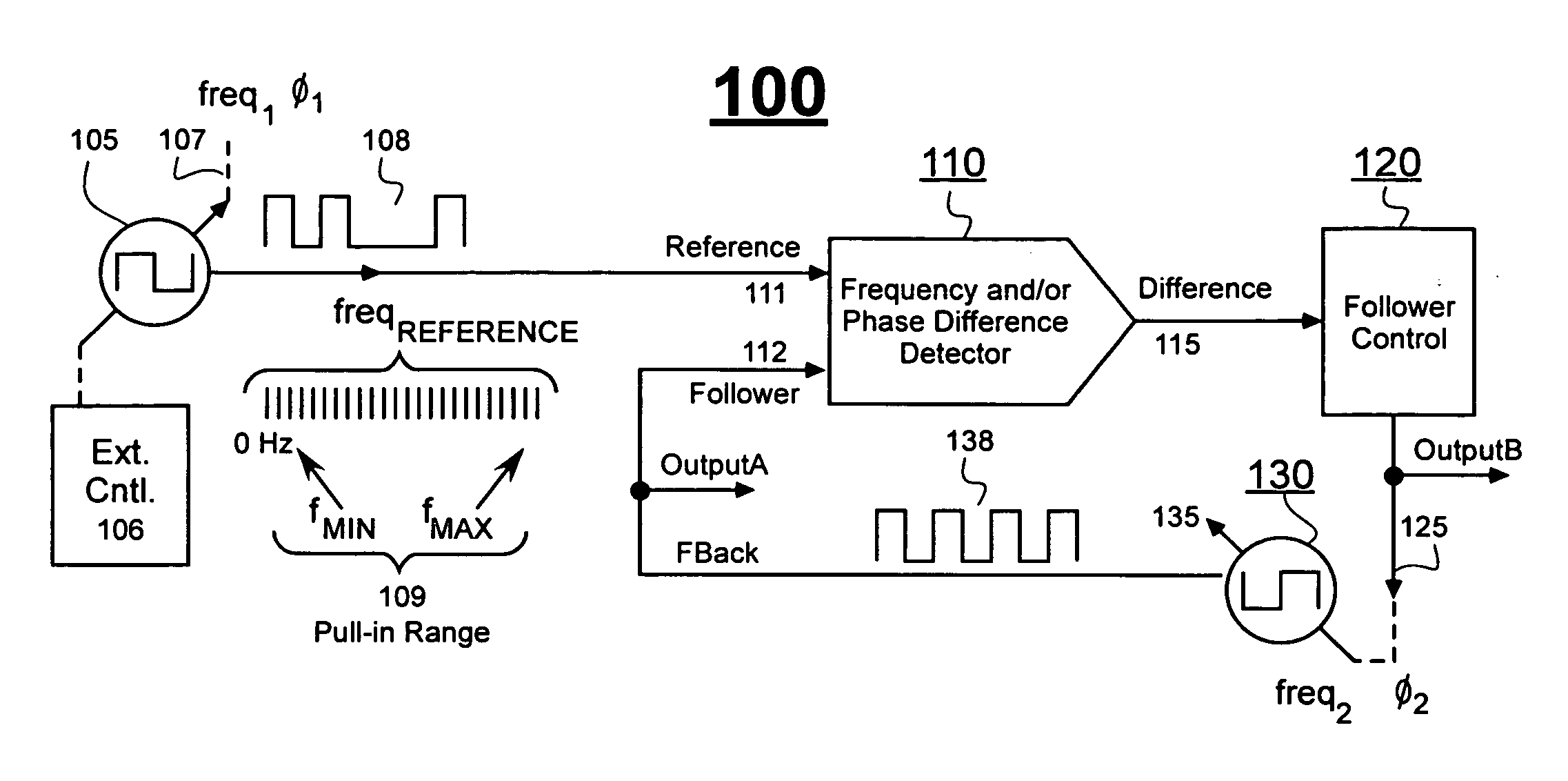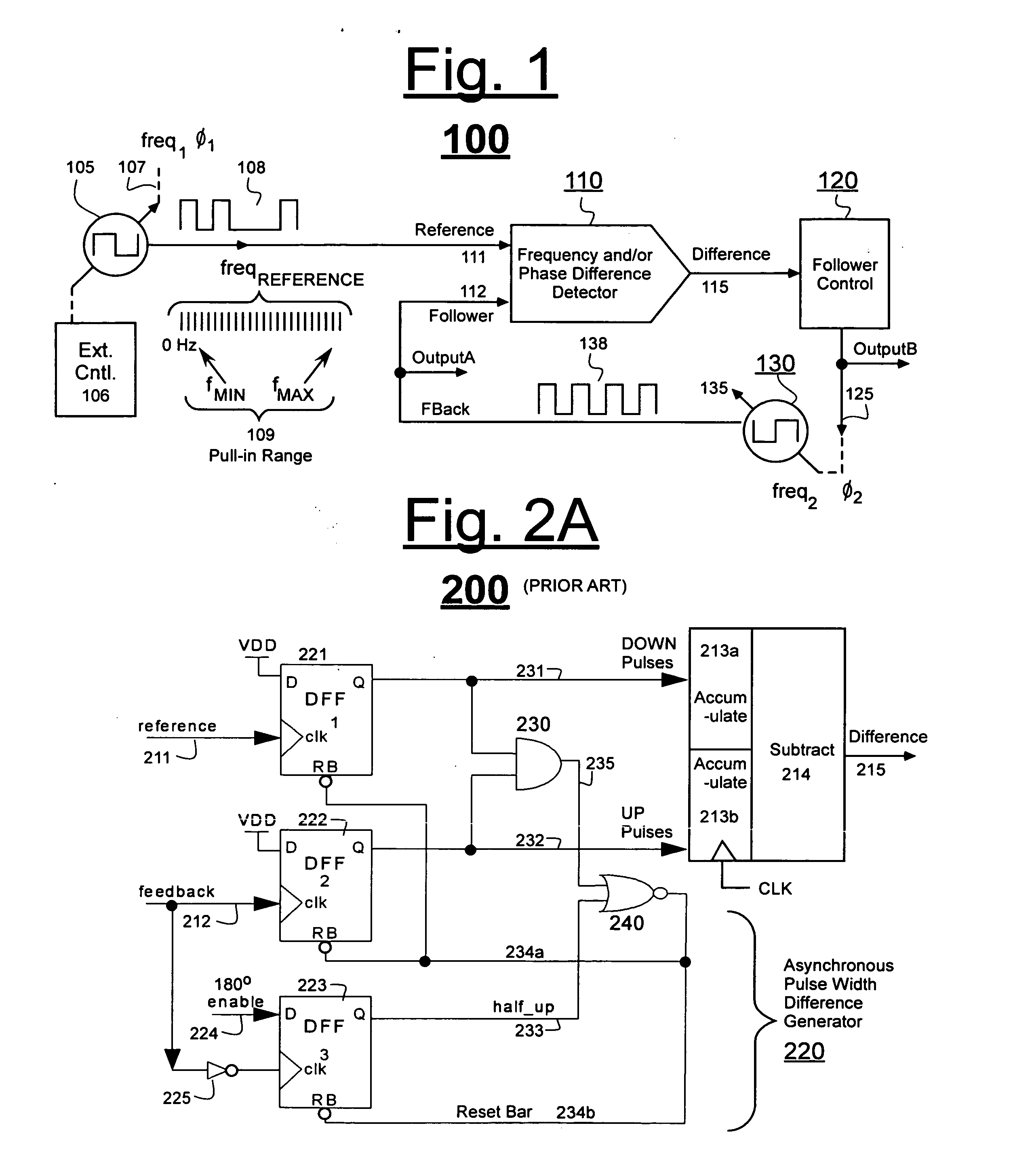Phase difference detector having concurrent fine and coarse capabilities
a phase difference detector and coarse capability technology, applied in the direction of phase difference detection angle demodulation, oscillation comparator circuit, pulse automatic control, etc., can solve the problem of starting to provide erroneous or misleading measurements, synchronous edge detection approach suffers from an inherent quantization error problem,
- Summary
- Abstract
- Description
- Claims
- Application Information
AI Technical Summary
Benefits of technology
Problems solved by technology
Method used
Image
Examples
Embodiment Construction
[0028]FIG. 1 shows a block diagram of a phase and / or frequency locking system 100 that employs a generic frequency and / or phase difference detector 110. Detector 110 produces a difference signal 115 representative of a frequency and / or phase difference between a supplied reference signal 111 and a locally-generated, follower signal 112. The follower signal 112 (also referred to at times as the feedback signal) is expected to follow the reference in terms of changing phase and / or frequency.
[0029]Reference signal 111 may be supplied from any of a variety of different kinds of sources 105. The sources 105 may be susceptible to intentional and / or random changes of frequency (freq1) and / or phase (φ1). The waveform 108 of the reference signal may be a regular square wave or an irregular pulse stream that is provided with or without jitter or other forms of noise. By way of a non-limiting example, waveform 108 may be an embedded clock signal recovered from a serial data stream and structur...
PUM
 Login to View More
Login to View More Abstract
Description
Claims
Application Information
 Login to View More
Login to View More - R&D
- Intellectual Property
- Life Sciences
- Materials
- Tech Scout
- Unparalleled Data Quality
- Higher Quality Content
- 60% Fewer Hallucinations
Browse by: Latest US Patents, China's latest patents, Technical Efficacy Thesaurus, Application Domain, Technology Topic, Popular Technical Reports.
© 2025 PatSnap. All rights reserved.Legal|Privacy policy|Modern Slavery Act Transparency Statement|Sitemap|About US| Contact US: help@patsnap.com



